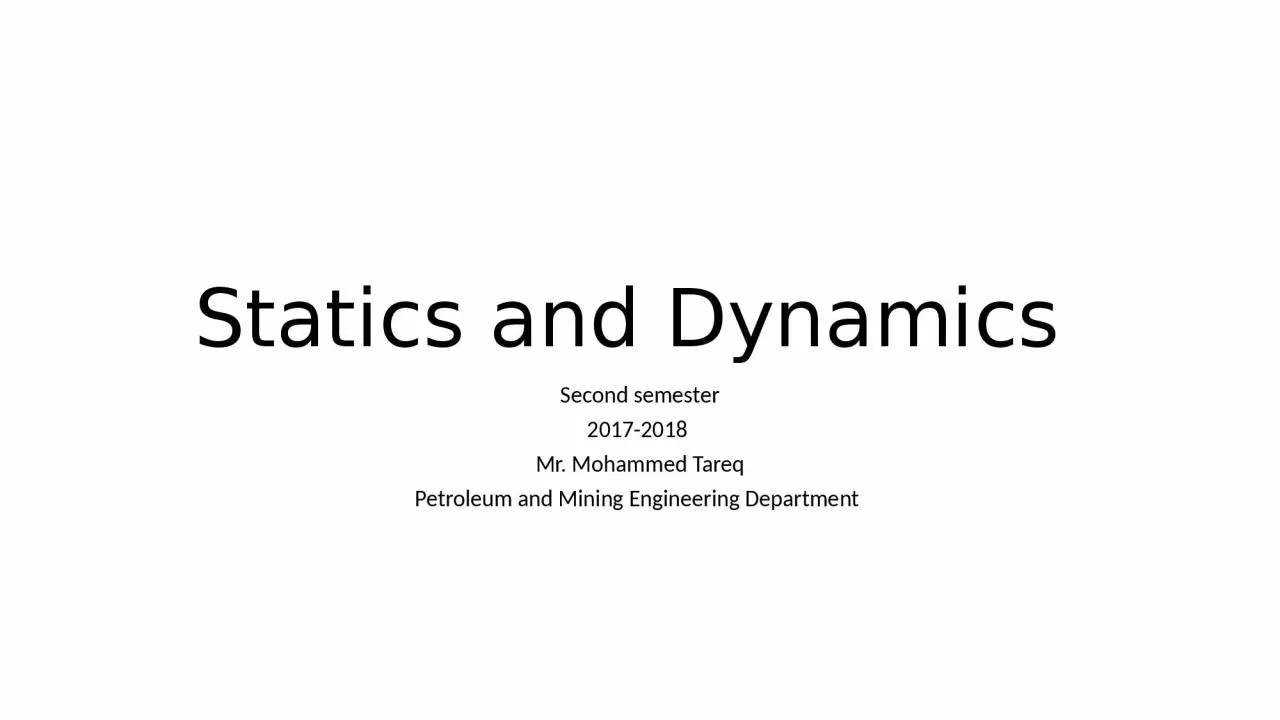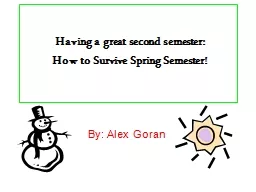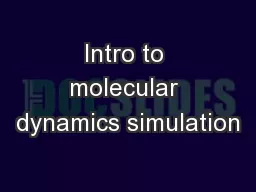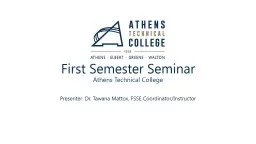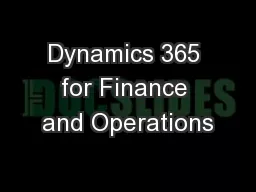PPT-Statics and Dynamics Second semester
Author : payton | Published Date : 2023-10-25
20172018 Mr Mohammed Tareq Petroleum and Mining Engineering Department Content Introduction Units of measurement Force Vectors Resultant Equilibrium of particle
Presentation Embed Code
Download Presentation
Download Presentation The PPT/PDF document "Statics and Dynamics Second semester" is the property of its rightful owner. Permission is granted to download and print the materials on this website for personal, non-commercial use only, and to display it on your personal computer provided you do not modify the materials and that you retain all copyright notices contained in the materials. By downloading content from our website, you accept the terms of this agreement.
Statics and Dynamics Second semester: Transcript
Download Rules Of Document
"Statics and Dynamics Second semester"The content belongs to its owner. You may download and print it for personal use, without modification, and keep all copyright notices. By downloading, you agree to these terms.
Related Documents

